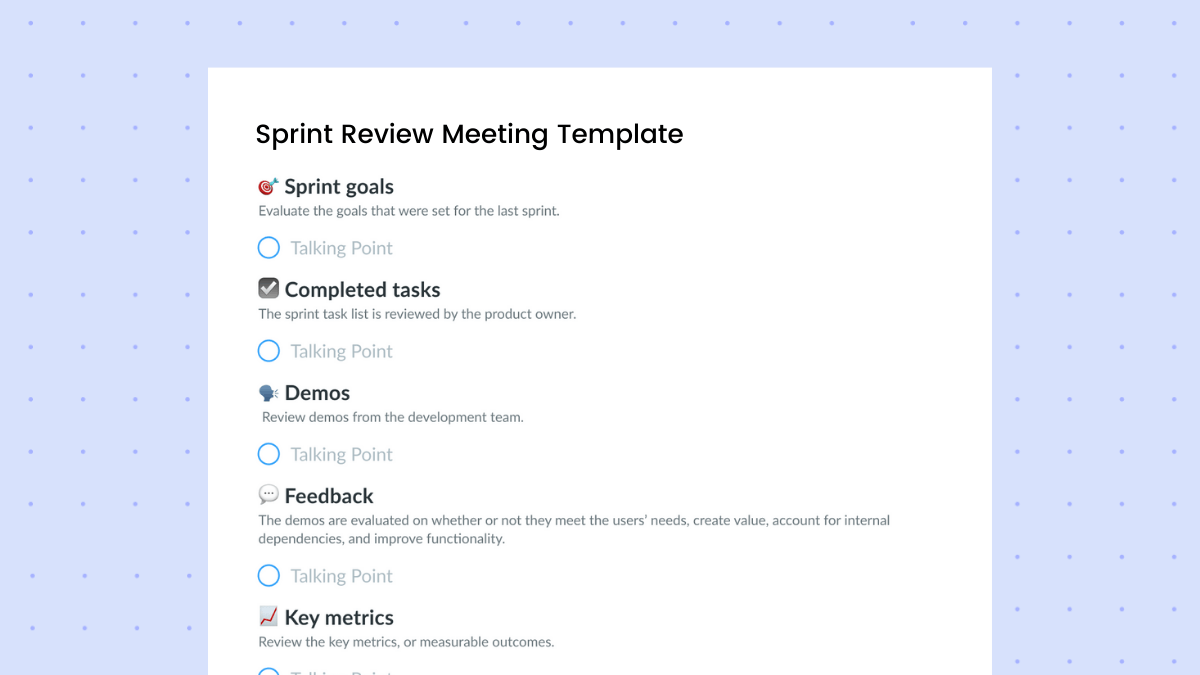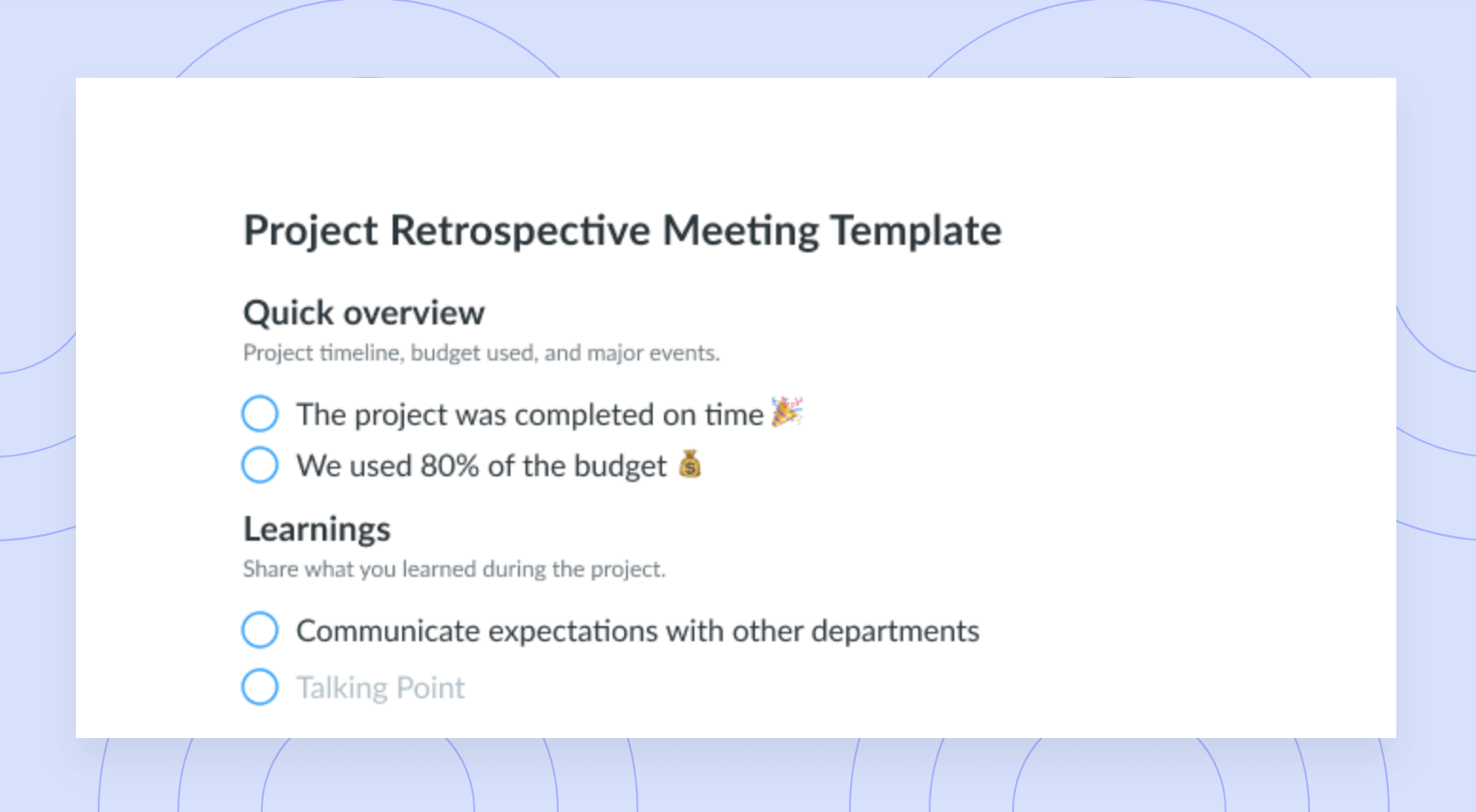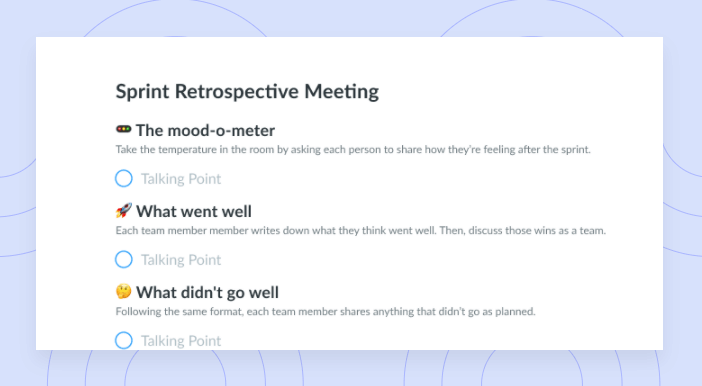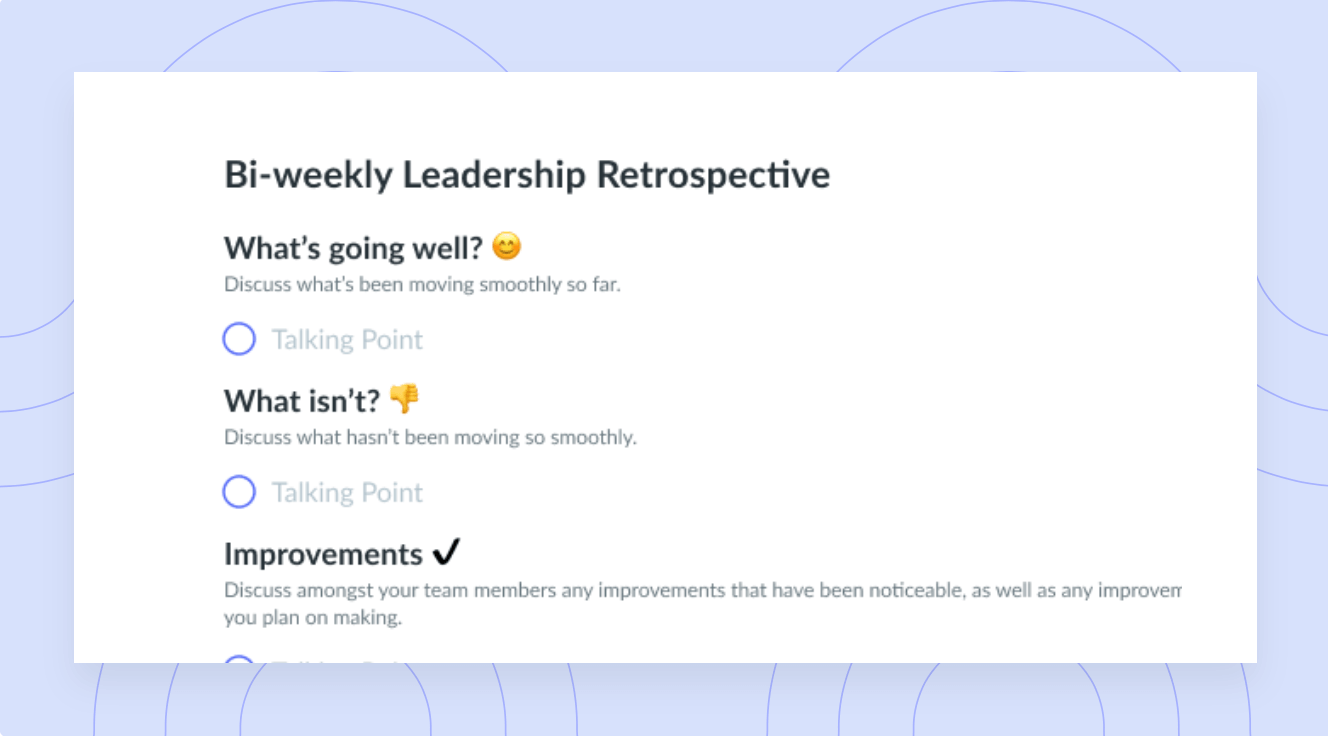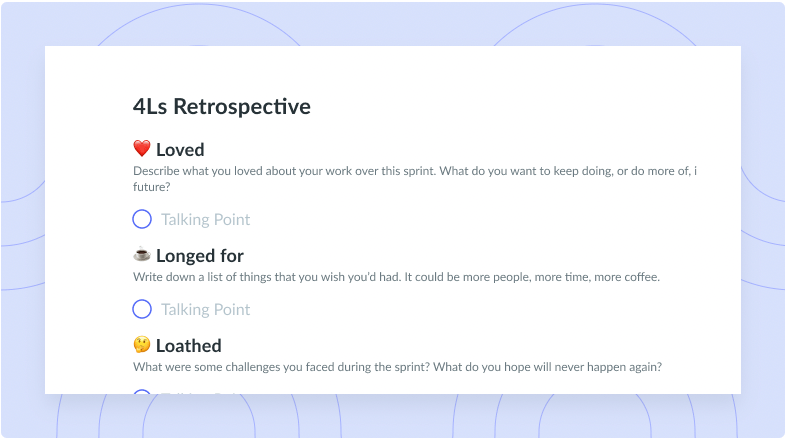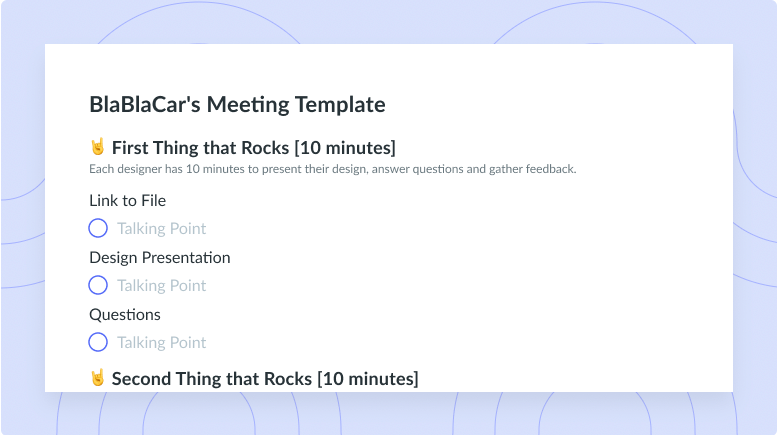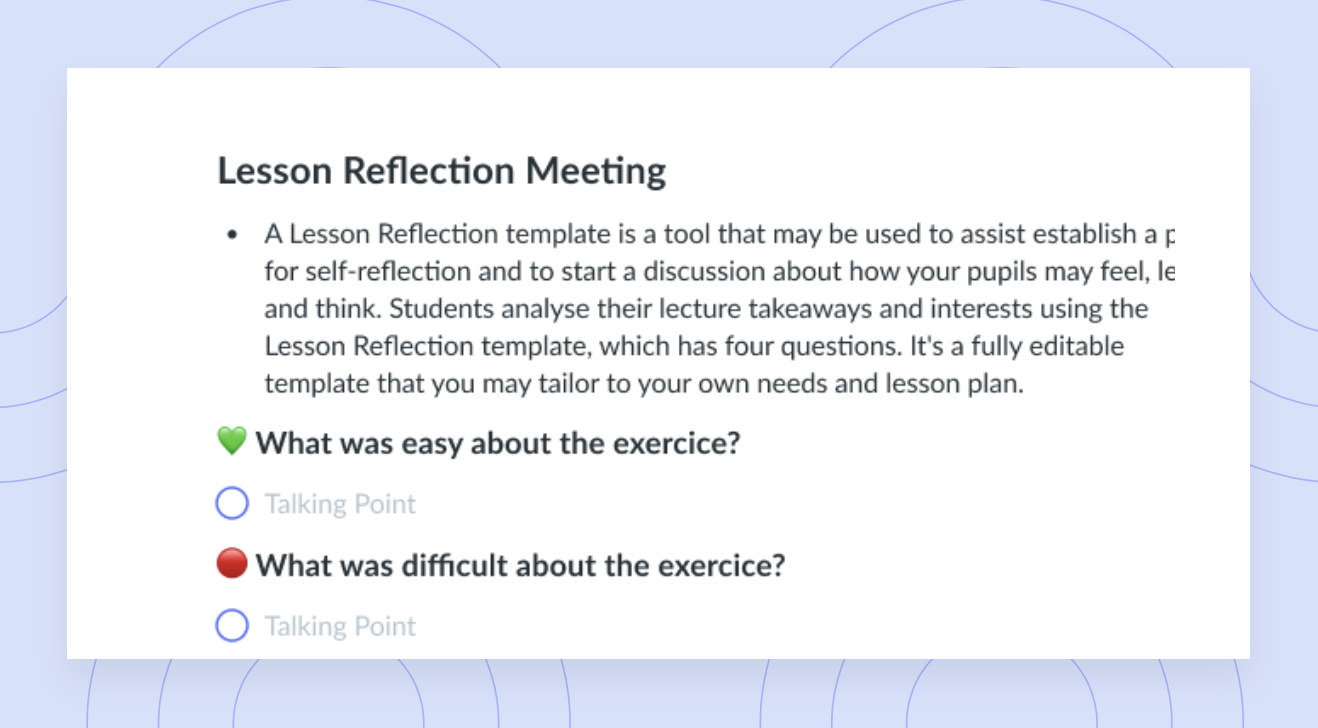How to Run an Insightful Project Retrospective: 8 Tips for a Successful Review
Lead your next project to success by hosting insightful project retrospective meetings. Follow our 8 tips for a productive review.
Great managers or leaders are constantly looking for ways to improve and iterate and you can’t strive for greatness if you don’t take the time to review or draw conclusions. A project retrospective meeting is a structured environment that aims to educate and report on a project’s success in a controlled and honest environment.
Continuous growth and perpetual improvements should be at the forefront when planning for your next project retrospective meeting. As a manager or leader, it’s your duty to ensure your teammates are collaborating in a way that leads to the success of your shipped projects or products and hosting frequent, efficient project retrospective meetings is a great way to do it.
This article will explore everything you need to know about project retrospectives and how you can host them both efficiently and effectively.
- What is a project retrospective?
- What are the benefits of running retrospectives?
- 8 tips for an insightful project retrospective
What is a project retrospective?
A project retrospective is a process where an organization or team carves time out of their day to reflect on a current project so everyone can move forward collectively in a more efficient manner. Scheduling time to reflect and assess the situation enables you to step back and examine things that are going well or maybe even elements of the project that need improvement. As soon as the collective team has identified areas within the project that need improvement, iterations can be made to redirect the project in a more positive direction.
When hosting a project retrospective, it’s best to do so multiple times throughout the course of the project. Conducting the project retrospective after the project has finished may help you avoid making the same mistakes on future projects but it won’t help you catch issues and make iterations throughout the course of your current project.
What are the benefits of running retrospectives?
Effective retrospectives facilitate transparency and allow teammates to put their best foot forward when it comes to submitting the final project. During retrospectives, teammates can discuss problems, or identify bugs before the final project or product is released; allowing the team or the organization as a whole to release the best possible project or product.
Whether it be a report, a new product, or an updated feature, running an effective retrospective will allow you to facilitate transparency, create a collaborative and communicative environment, catch potential issues early, and pinpoint process improvements. Creating a safe space where teammates can share opinions or ideas without blame or judgement creates a more comfortable environment and effective workplace.

Put your best foot forward with Fellow
Have all of your project notes, updates, and insights all in one place with a meeting management tool like Fellow.
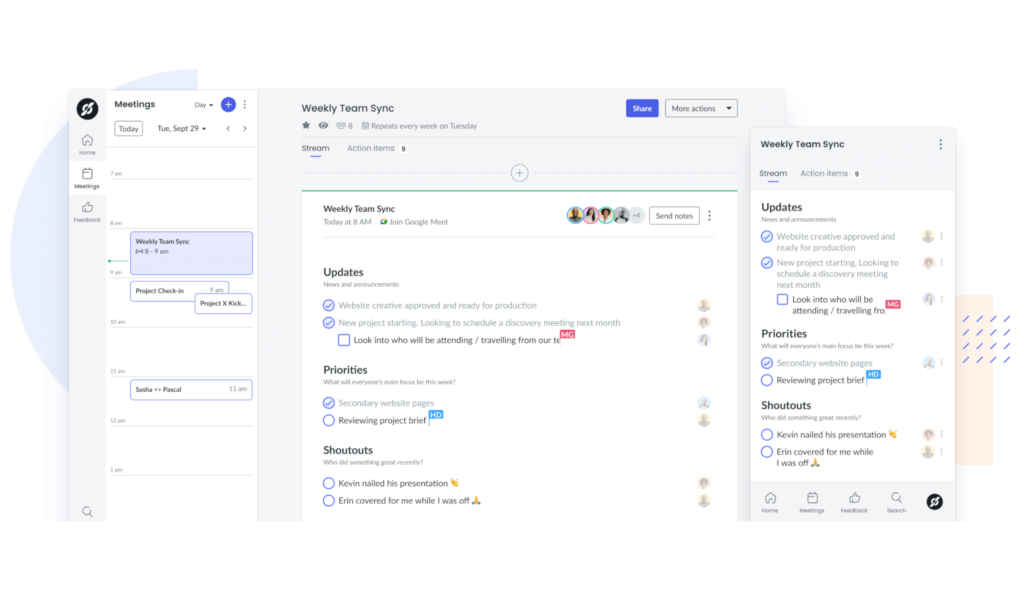
8 tips for an insightful project retrospective
Preparing to host your next project retrospective meeting? Here are 8 tips to help you get started:
- Review the facts
- Set a positive tone
- Start, Stop, Continue exercise
- Create a safe space to share
- Identify opportunities for next time
- Ask questions
- Turn insights into actions
- Share the takeaways
1 Review the facts
Before you can dive into the nitty-gritty and get to work on identifying areas of concern, you must first review the facts and the project in its entirety with an unbiased lens. Reviewing the scope and details will provide you with the insight you need to form your own credible opinion which can be shared with the intent to improve the project.
Has your project stayed on budget? Are you on track to hit your goals that were defined at the beginning of the project? Are key stakeholders collaborating effectively to make sure the project stays on track? Diving into key metrics like the project goals, timeline, budget, and KPI’s will help you create benchmarks and determine whether the project has been successful to date.
2 Set a positive tone
A great way to set a positive tone in your next project retrospective is to start out by celebrating the wins and pointing out the positives. Project retrospectives can sometimes become tense or uncomfortable because they often entail pointing out flaws or addressing major issues. A great way to start the project retrospective out on a positive note is to offer shout-outs to teammates that have moved the needle or accomplished something great.
Leadership is all about celebrating the small wins and taking the time to shout out anyone on your team that has contributed to the project in a positive way is a great way to boost morale and inspire teammates to do their best work moving forward.
3 Start, Stop, Continue exercise
During a start, stop, and continue exercise start refers to the actions that your team will be completing in the next cycle, stop refers to the process of looking back to the previous cycle to identify things that didn’t work, and continue refers to actions that worked in the previous cycle and need to be part of the team’s core actions moving forward. The start, stop, continue exercise is a great tool that will enable you and your teammates to determine how you worked together in the past, and how you can continue to improve upon how you work together in the future.
4 Create a safe space to share
One of the most important elements of any meeting where teammates are communicating openly is making sure that everyone can do so safely without hesitation or judgment. During project retrospectives, it’s extremely important to create a sense of psychological safety for each one of your teammates so everyone can speak openly about their learnings or challenges.
When teammates feel safe at work, it becomes easier for them to participate actively in meetings, address or speak up about any problems or concerns, collaborate on projects, and engage with their peers. Creating an inclusive meeting should be at the top of your list when planning for your next project retrospective.
5 Identify opportunities for next time
Taking the time to reflect and identify areas that can be improved during the next phase of the project or during a future project is a great way to ensure your team is constantly making improvements and striving for greatness.
Reflecting on any challenges that acted as barriers is a great opportunity to peel back the layers and dive into areas that can be streamlined or reinvented in the future. Talking about any challenges openly makes it possible for you as the leader or manager to unblock your teammates or connect them to the tools or resources they may need to make iterations or improvements.
6 Ask questions
Asking open and honest questions during your project retrospective meetings helps to identify key areas that need to be improved and it can also aid in putting any teammates’ concerns at bay. When building out your meeting agenda for the project retrospective, make sure to include a section for questions so everyone has the opportunity to voice their concerns while gaining the clarity and guidance they need to move forward.
The question period during your project retrospective meeting can be used to ask questions about results, ask questions about goals, guidelines, or timelines, or it can be used to clarify each team member’s respective role. Regardless, giving each team member the opportunity to voice their concerns and gain additional insights throughout the course of the project.
7 Turn insights into actions
Project retrospective meetings are a great way to turn insights into actionable items. Getting clear on key insights and breaking them down into clear action items is a great way to get everyone on track for the next phase of the project. Make sure to take note of key information like who the main stakeholder will be, what their main responsibilities will be, and what their timeline looks like. Getting clear on the who, what, when, where, and why, will ensure everything is organized and easy to digest.
If you’re worried that you may not be effectively turning insights into actions during your project retrospective meetings, you may want to check out this article that outlines 5 common meeting syndromes that result in unorganized or unproductive meetings.
8 Share the takeaways
Sharing major takeaways is a great way to make sure everyone’s informed and working towards the same goals. Documenting takeaways in your meeting agenda will ensure everyone’s in the know, and knows how to move forward. Sharing meeting notes with a tool like Fellow makes it possible for you and your team to collaborate on an agenda while prioritizing action items and reminders to keep everyone on track.
Sharing the meeting notes from your project retrospective is a great way to inform everyone of major takeaways while sharing any great lessons with anyone that may benefit from the information (whether they are a key stakeholder in the project or not).
Free retrospective templates
Start, Stop, Continue meeting agenda template

Project Retrospective meeting template

Insightful retrospectives are fundamental when aiming for success
Project retrospective meetings make it possible for you and your teammates to review core facts, set a positive tone for the remainder of the project or future collaborations, create a safe space to share ideas or concerns, identify underlying opportunities, ask important questions, and turn fundamental insights into action items.
Whether your product or project has shipped, or you’re simply looking to make improvements as you enter the next phase, hosting an effective project retrospective meeting will help you and your teammates align and conquer your KPI’s while promoting collaboration and transparency.

![How to Run an Engaging Sprint Retrospective Meeting [+ Free Templates]](https://fellow.app/wp-content/uploads/2022/02/retro.jpg)
